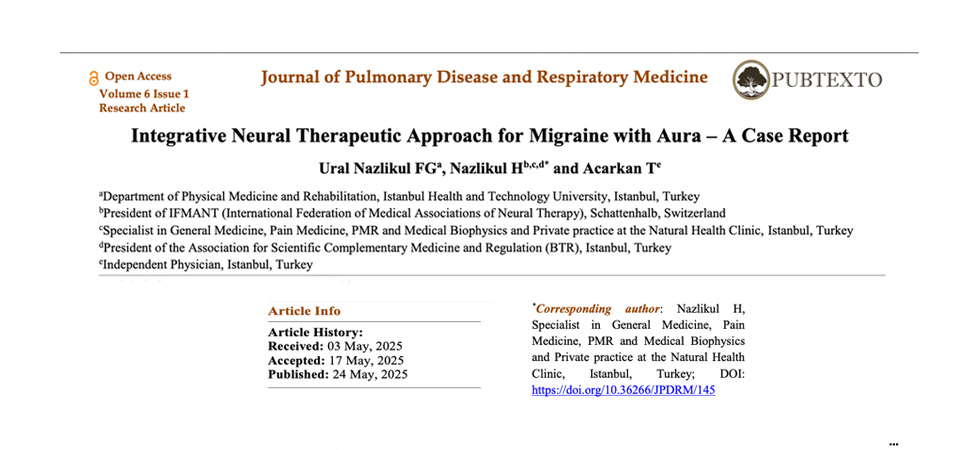Integrative Neural Therapeutic Approach for Migraine with Aura – A Case Report

Abstract
This case report presents the clinical course of a 37-year-old female patient diagnosed with migraine with aura, who experienced significant and sustained symptom relief following neural therapeutic interventions. The patient had a long-standing history of recurrent, unilateral, pulsating headaches, often preceded by visual aura symptoms such as scintillating scotoma, and accompanied by nausea, photophobia, and phonophobia. Previous pharmacological treatments provided only limited and temporary relief and were associated with side effects.
A structured, integrative therapeutic protocol was initiated, comprising neural therapy with 1% procaine administered segmentally at cervical ganglia (C2/C3), the stellate ganglion, tonsillar region, trigeminal pathways, and relevant vegetative-reflex zones. The treatment focused on modulation of the autonomic nervous system and regulation of possible interference fields. After just two sessions, the patient reported a marked reduction in attack frequency and improvement in vegetative symptoms, with further improvement following a total of four sessions. Complementary interventions included a migraine diary to identify individual triggers, nutritional optimization, stress reduction, and patient education to improve early aura recognition and preventive action. Notably, the patient was able to discontinue acute medication use without recurrence of intense episodes, and her quality of life improved substantially.
This case underscores the value of neural therapy as a safe, efficient, and individualized approach in managing migraine with aura. The observed therapeutic effects are attributed to autonomic regulation, stabilization of neuroimmunological networks, and treatment of interference fields such as chronic tonsillitis. Importantly, neural therapy allowed for medication sparing and enhanced patient compliance without systemic adverse effects. These findings support the integration of neural therapy into a holistic, patient-centered strategy for chronic migraine conditions. It provides an alternative for patients who seek non-pharmacological treatment options and demonstrates promising potential in reducing migraine burden long-term.
Full article / DOI: https://doi.org/10.36266/JPDRM/145